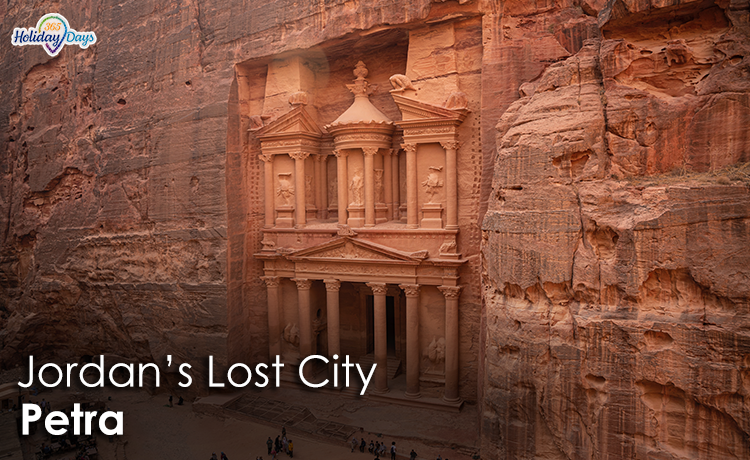
Hidden amidst the breathtaking landscapes of Jordan’s desert lies a mesmerizing wonder of the ancient world – Petra. Also known as the “Rose City,” Petra is a UNESCO World Heritage Site and a symbol of Jordan’s rich historical and cultural heritage. This magnificent archaeological site, carved into vibrant red cliffs, stands as a testament to the ingenuity and splendor of the Nabateans, an ancient Arab civilization that thrived over two millennia ago.
A Glimpse into History
Petra’s history dates back to the 6th century BCE when it was established as the capital of the Nabatean Kingdom. The Nabateans were skilled traders, and their strategic location on the crossroads of important trade routes enabled them to flourish. Petra’s glory reached its peak during the Hellenistic and Roman periods when the city became an essential hub for commerce and a melting pot of diverse cultures.
The Lost City Unveiled
For centuries, Petra remained shrouded in mystery, accessible only to local Bedouin tribes. It wasn’t until 1812 when the Swiss explorer Johann Ludwig Burckhardt rediscovered the site for the Western world. Today, Petra welcomes travelers from all corners of the globe, eager to witness its stunning rock-cut architecture and immerse themselves in its ancient allure.
The Siq: An Enchanting Entrance
As you venture into Petra, the journey begins with a dramatic passage through the Siq, a narrow and winding gorge flanked by towering cliffs on either side. This natural corridor, which extends for about a kilometer, creates an aura of anticipation as it gradually reveals glimpses of the city beyond. The play of light and shadow on the rose-red sandstone adds an element of mystique, making the approach to Petra an unforgettable experience.
The Treasury – A Masterpiece in Stone
Emerging from the Siq, visitors are greeted with one of Petra’s most iconic and majestic structures – the Treasury (Al-Khazneh). Carved with astonishing precision into the rock face, the Treasury’s facade features intricate columns, statues, and reliefs, displaying a fusion of Nabatean, Hellenistic, and Egyptian architectural influences. Legend has it that the Treasury holds hidden treasures, which adds to its allure and intrigue.
Beyond the Treasury: Exploring Petra’s Gems
Beyond the Treasury, Petra unfurls its vast complex of tombs, temples, and dwellings, all meticulously crafted into the rose-colored cliffs. Notable highlights include the Street of Facades, the Theater, the Royal Tombs, and the Monastery (Ad-Deir), which rewards intrepid hikers with stunning panoramic views of the surrounding desert.
A Living Heritage
Despite being an ancient archaeological marvel, Petra is not simply a relic of the past. The local Bedouin community, who are descendants of the ancient Nabateans, have lived in the area for generations, maintaining a symbiotic relationship with this remarkable site. Their presence adds a touch of authenticity to the experience, and you may encounter them selling handcrafted souvenirs or offering traditional tea.
Tips for Travelers:
- Best Time to Visit: Petra can get scorching hot during the summer, so the ideal time to visit is during the spring (March to May) and autumn (September to November) when the weather is more pleasant for exploration.
- Wear Comfortable Shoes: Petra involves a fair amount of walking, so comfortable, sturdy footwear is essential.
- Sun Protection: Sunscreen, a hat, and sunglasses are essential to shield yourself from the intense desert sun.
- Water and Snacks: Carry enough water and snacks as there are limited options within the site.
- Guided Tours: Consider hiring a local guide to enhance your understanding of Petra’s history and significance.
In Conclusion
Stepping into Petra is like journeying back through time, unraveling the secrets of an ancient civilization etched into the desert’s heart. As the sun casts its warm glow on the rose-red facades, you can’t help but feel awe-struck by the sheer beauty and craftsmanship that the Nabateans left behind. Petra stands not only as a remarkable archaeological site but also as a testament to the enduring spirit of humanity’s ability to create wonders against the backdrop of an ever-changing world. Happy travels!
